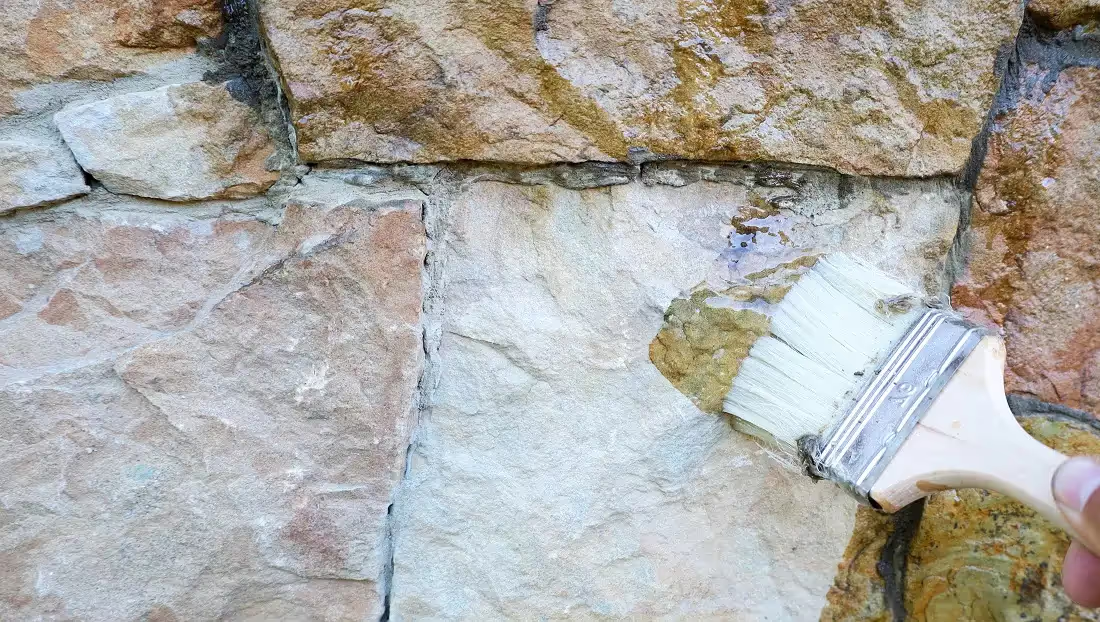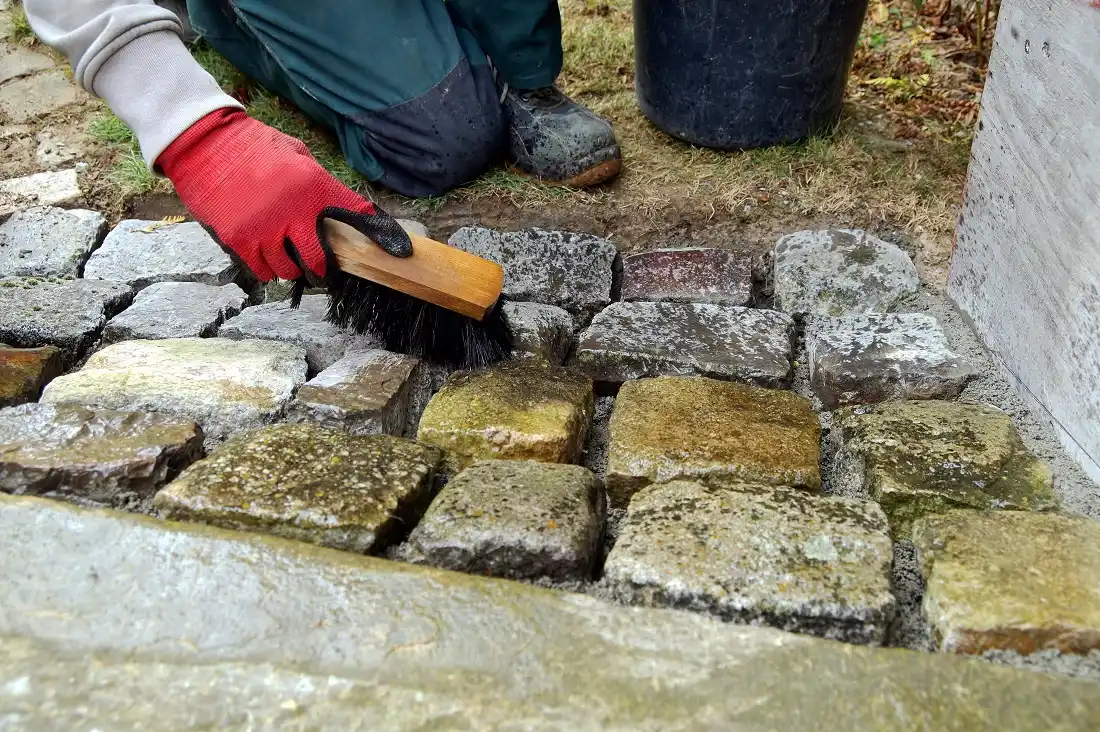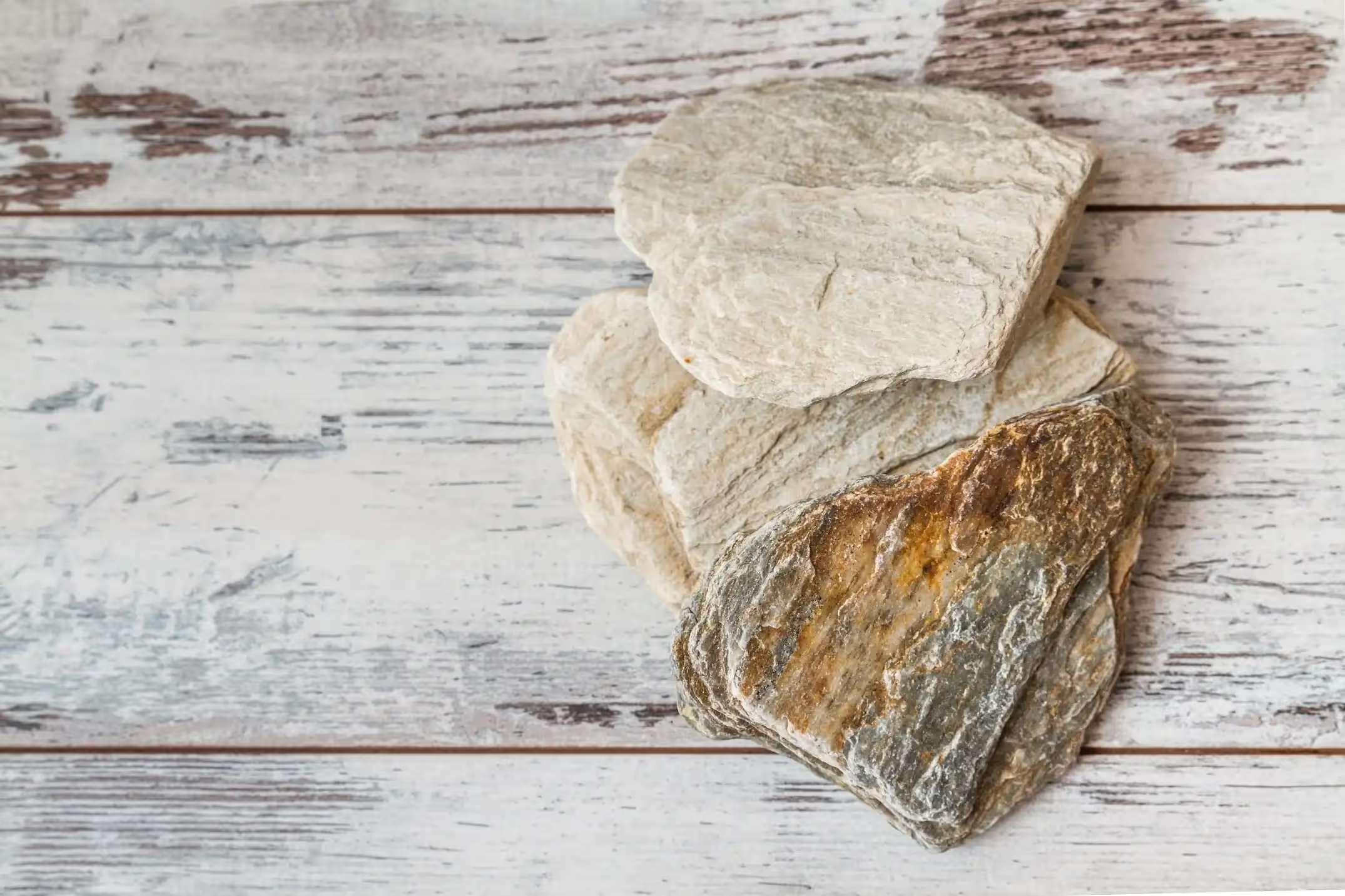- Stone Center
- Blog
How to Restore Natural Stone: Professional Restoration Process
29/8/2025
8/28/2025
How to Restore Natural Stone: Professional Restoration Process

Natural stone surfaces bring timeless elegance to any space, but even the most durable materials can lose their luster over time. Whether it's marble countertops showing etching marks, limestone floors dulled by heavy foot traffic, or granite surfaces that have lost their original shine, the good news is that most stone damage can be reversed.
We’ve helped many Columbus and Cincinnati homeowners restore their natural stone floors, patios, and more to their former beauty. In this article, we’ll explain how natural stone restoration works, how to maintain the results, and how to avoid common mistakes.

What Is Natural Stone Restoration?
Natural stone restoration is the process of bringing worn, scratched, or stained stone back to its original appearance and condition. It goes beyond basic cleaning and sealing by addressing deeper issues like etching, dullness, cracks, and unevenness.
While regular cleaning helps maintain natural beauty, it can't fix long-term wear. Restoration involves a full process of grinding, rehoning, polishing, sealing, and sometimes repair, performed by experienced professionals using specialized equipment and products. This is especially important for high-traffic areas and outdoor surfaces exposed to moisture, debris, and extreme temperatures.
Identifying Damage on Your Natural Stone Surfaces: Common Types
Even with regular maintenance, you can’t control everything. Natural stone surfaces are exposed to factors that cause wear or damage. Here's what to look out for:
- Stains: Certain foods and cleaning acids will stain the natural stone, although this is less common in outdoor areas. Water stains are the result of deposits in the liquid that builds up over time, whereas the most common culprit of rust stains is metallic objects.
- Hit marks: Also called stun marks, these occur when natural stone experiences a sudden, sharp impact that produces a white discoloration. You end up with weak points that can fracture the stone, either on the surface or through the entire slab, depending on the impact's force.
- Extreme temperature damage: Extreme heat may cause thermal shock that cracks stone. Natural stone can crack when trapped water freezes in joints or existing cracks. This depends on stone porosity and water level absorption.
- Etching: Occurs when an acidic chemical eats away and dissolves the surface of natural stone, leaving a dull mark. In mild scenarios, it looks like a clear liquid stain; however, the longer the stone is exposed to chemicals, the worse the damage.
- Scratch marks: Foot traffic can scratch natural stone when dirt, sand, and other abrasive debris get stuck under shoes. This usually occurs when materials harder than stone rub up against it (for example, dragging heavy furniture across stone paving).
- Cracks: Provided pavers are of a good grade before laying; cracks can be avoided by proper handling during installation and good design planning. Aside from weather, cracking often results from a poor base, bad jointing, or tree roots underneath.
- Hazing: Efflorescence is a white, chalky substance that may appear on the surface of natural stone. This occurs when salts found in soil and water are dissolved by rain and groundwater. As moisture evaporates, salt is left behind. It won't harm the stone, but you should clean it off.
Identify the damage early, and you’ll prevent minor issues from becoming major restoration projects. Restored stone surfaces enhance curb appeal, making a professional assessment worthwhile for any visible damage.
Natural Stone Restoration Process

Nine times out of ten, a natural stone restoration company is required to get the stone back to pristine condition. Because stone restoration techniques are labor-intensive, a natural stone restoration services company will likely send an estimator to your home to determine whether you need light maintenance, restoration, or repair.
Deep Cleaning
The first step is thorough cleaning with pH-neutral, specialized stone cleaners that remove dirt and debris without harming sensitive surfaces like marble or limestone. Proper cleaning requires knowing the stone’s properties and using the right method for each type. For example, cleaning limestone requires care, as damaging chemicals can cause harm to its porous surface.
Grinding
For heavily damaged surfaces, restoration may begin with grinding using diamond abrasives. This removes deep scratches, stains, and etching by essentially creating a new surface. The process progresses through increasingly fine abrasives until the desired smoothness is achieved.
Rehoning
Honing follows grinding, using progressively finer abrasives to prepare the surface for polishing. This step removes scratches left by coarser grits and begins to restore the stone's natural beauty.
Chip and Crack Repair
Professional chip and crack repair uses materials matched to your stone. Small chips are filled with color-matched compounds, while larger cracks may need structural fixes. Repairs are done before polishing for a smooth finish.
Polishing
Polishing brings out the stone's natural shine and luster. Using specialized compounds and equipment, professionals achieve the desired finish, whether high-gloss, satin, or matte. Multiple coats of polishing compounds may be necessary to achieve optimal results.
Sealing

The final step involves applying a high-quality sealer to protect the restored surface. Modern sealers penetrate the stone's pores, creating a barrier against stains while maintaining the natural beauty of the material.
Sealer selection depends on the stone type and intended use. Some areas require sealers that provide maximum protection against oils and acids, while others prioritize breathability or specific aesthetic qualities.
⚠️ If you're restoring a floor, you'll need to move the furniture, as many contractors don't risk this potential liability.
Follow-Up Maintenance Measures
Proper maintenance helps preserve your restoration investment and extends the time between professional treatments. Here are essential maintenance practices for different stone surface types:
- Daily cleaning: Accessible stone surfaces like walkways, steps, fountains, etc., should be kept free of debris by periodically sweeping and washing with water.
- Weekly deep cleaning: Use specialized stone cleaner products and clean water to maintain surface shine and remove stubborn stains before they penetrate.
- Monthly inspections: Normal maintenance should include periodic inspection of stone surfaces for structural defects, movement, deterioration, or staining.
- Seasonal maintenance: Schedule professional inspection of outdoor areas and high-traffic natural stone floors for wear patterns.
- Annual sealing: Most stone surfaces require regular maintenance sealing to maintain maximum protection against stains and weather damage.
Common Restoration Mistakes to Avoid
Understanding what NOT to do is just as important as knowing proper restoration techniques. These common mistakes can cause permanent damage to your stone surfaces.
Using Wrong Cleaning Products
Never use acidic cleaners like vinegar or lemon-based products on marble, limestone, or travertine. These acids cause immediate etching damage that requires professional restoration to repair. Similarly, avoid abrasive cleaners that can scratch polished surfaces.

Neglecting Test Areas
Always test restoration products in an inconspicuous area first. Stone can react unpredictably to cleaning products or sealers, and what works on one type of stone may damage another.
Inadequate Preparation
Don’t rush through your prep! Poor cleaning or removal of debris before restoration leads to poor results. Particles embedded in cleaning cloths can scratch surfaces during polishing, while inadequate cleaning prevents proper sealer adhesion.
DIY Restoration Attempts
Attempting to restore stone without experience can worsen the damage. Without the right tools, materials, or understanding of stone porosity and hardness, you risk uneven finishes, improper sealing, or surface scratching.
Experienced professionals understand how different stone types react to various treatments and can avoid costly mistakes.
How to Choose Your Natural Stone Restoration Company?
Whether you're restoring stone floors or need general stone refinishers for fireplace surrounds or cladding, you'll want to hire the very best for the job. Consider the following to help vet a suitable natural stone maintenance and restoration company.
- Check reviews and reputation: Read online reviews to get a feel for how others rate their service and professionalism.
- Get multiple quotes: Always ask for quotes from more than one contractor, so you have an accurate idea of the cost.
- Assess expertise: A qualified professional will ask questions about the damage, be able to educate you about the solutions, and clarify expectations.
- Repair-focused approach: Most good stone restoration companies will advocate repair as much as possible, and replacement as a last resort.
- Stone-specific experience: Make sure the contractor you select has experience with your type of stone. Restoring granite is more difficult than marble, for instance, and requires specific expertise.
- Verify insurance: Always make sure the contractor has a certificate of insurance, including liability and workers' compensation insurance.
Restore Your Stone's Natural Beauty Today
Even when sealed, natural stone experiences wear and tear that requires sporadic attention. As trusted natural stone suppliers and restorers, we believe there's no need to replace stone when it can be returned to the best possible condition.
Stone Center has mastered the art of natural stone restoration, which renews, repairs, refurbishes, refinishes, and preserves natural stone to its former glory. Along with attention to detail, our restoration experts provide a service second to none. Whether it's stone tile restoration, cladding, or landscaping, we can help. Contact us to get your stone looking good as new!
FAQ
.avif)
Jon, the owner of Stone Center, is a knowledgeable expert in natural stone products, specializing in various types of stone for landscaping and architectural projects. Passionate about promoting the beauty and versatility of natural stone, Jon aims to use these blogs to inspire readers with creative ideas to upgrade their homes.
How much does it cost to get a stone restored?
How much you end up spending to restore stone varies on the type of stone, the technique, and the stone’s current condition. Stone in good condition will cost less to restore, whereas stone that has a lot of wear and tear may require a longer restoration.







